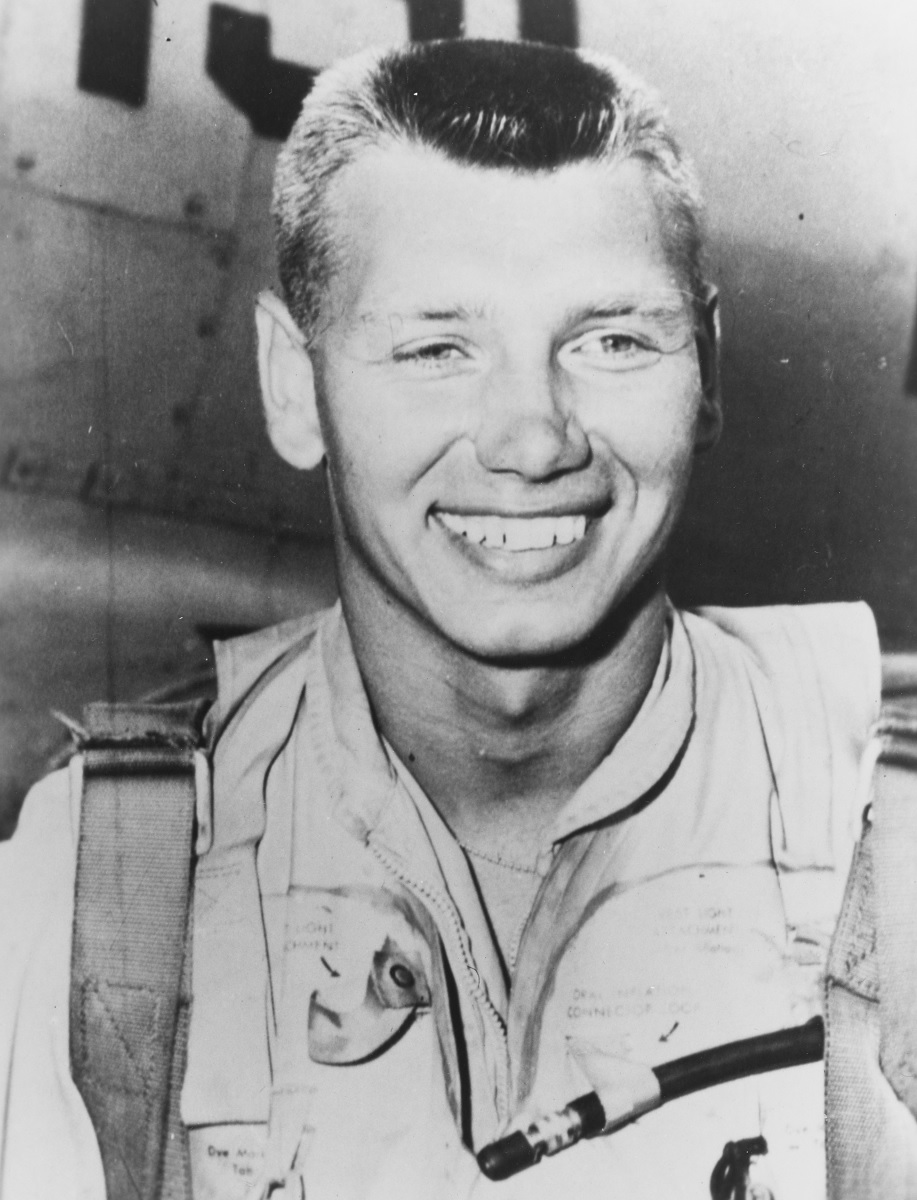Despite the fact that Estocin’s A-4E caught fire on its final approach, he managed to land safely into the barrier, and the fire crew extinguished the flames as he descended from the cockpit unharmed
The A-4 Skyhawk was created by Douglas Aircraft Company designer Ed Heinemann in response to his worries about the weight and cost of combat aircraft rising in the 1950s. The A-4 broke with this trend by omitting a large wing-folding mechanism in favor of a compact delta wing for better storage on aircraft carriers. To further cut weight, engineers changed the pilot ejection mechanism and minimized the number of cockpit components.
Other measures included replacing a heavy-duty battery with a wind-powered generator that was stored in the fuselage, using gravity-dropped landing gear instead of a backup hydraulic system, and installing an air conditioning system that was one-third lighter than those that were previously available. The A-4, or “Tinker Toy,” as pilots called it, exceeded the Navy’s maximum weight limit by more than half in its final configuration.
The National Naval Aviation Museum claims that Skyhawks flew more combat missions over Vietnam than any other naval aircraft, including notable missions for the Iron Hand, strikes against bridges and power plants in North Vietnam, and close air support of troops engaged in ground combat in South Vietnam.
Iron Hand was a strictly SA-2 “Guideline” kill-and-suppression operation, typically carried out in support of an Alpha strike against a significant target by a single A-4 equipped with two or more AGM-45 Shrikes.
As told by Peter E. Davies in his book A-4 Skyhawk Vs North Vietnamese AAA North Vietnam 1964-1972, an outstanding example of Iron Hand skill was displayed on Apr. 20, 1967, by VA-192’s Operations Officer, Lt Cdr Mike Estocin, flying from Ticonderoga as part of CVW-19. He conducted a three-aircraft Iron Hand flight against three 285th Missile Regiment SA-2 sites near Haiphong with the goal of taking out as many SAM batteries as he could. His strategy was flying as close as he could to a target before launching his missiles. Although Estocin’s A-4E sustained significant AAA damage to its wings, all three sites were destroyed.
He went back to the target to use the last remaining Shrike despite the fuel depletion accelerating quickly. After getting his “feet wet,” Estocin connected with an A-3 “Whale” tanker that towed him back to Ticonderoga while pumping fuel into his aircraft a little bit more quickly than it was leaking out. Knowing that he only had enough fuel for one attempt at a landing, he detached from the tanker two miles from CVA-14 and headed for the deck. Despite the fact that Estocin’s A-4E caught fire on his final approach, he managed to land the aircraft safely into the barrier, and the fire crew put out the flames as he descended from the cockpit unharmed.
When his squadronmate Lt(jg) J. W. Cain was shot down by AAA in an A-4E BuNo 152076 during VA-192’s Alpha strike attack on a fuel dump in Haiphong on April 26, 1967, Lt Cdr Estocin was once more SAM hunting. As he was returning to 12,000 feet, shortly after Estocin’s Iron Hand section had lofted a Shrike in front of the strike force, he noticed an SA-2 approaching him. Just as the missile burst close to his aircraft, he started an evasive diving turn after likely positioning himself to target the missile’s launch location. He rolled and dove toward the earth while his A-4 (BuNo 151073) was on fire before pulling out at 2,000 feet.
By this time, Estocin’s aircraft was burning intensely as the pilot raced for the coast. As the Skyhawk slowly lost speed, another SAM that was passing nearby came dangerously close to striking it. Lt Cdr John Nichols of VF-191 followed the downed A-4E in his F-8E, observing substantial damage to its forward fuselage and observing Estocin seemingly slumped forward in his cockpit, apparently oblivious to radio messages. Estocin was later identified as the future MiG killer. The plane lost all of its stores when their wiring burned out as it went inverted at 1,000 feet just short of the coast before crashing. Shortly after, Estocin received the Medal of Honor posthumously, becoming him the first and only US Navy jet pilot to receive it for a combat mission.

A-4 Skyhawk Vs North Vietnamese AAA North Vietnam 1964-1972 is published by Osprey Publishing and is available to order here.
Photo by U.S. Navy; Artwork: Osprey

